Vortex PC66 keyboard review (Sponsored)
This is my first proper keyboard review and I’m happy to be able to do it as sponsored content. I had one main requirement for doing this as sponsored content was that I wanted to stay true to my opinion. I’m happy that Vortex was alright with this. If a company isn’t scared of constructive feedback, they really must believe in their products, and I gotta say that this keyboard did surprise me!
Enjoy ✌️
I was contacted by Vortex and asked if I would be interested in doing a partner review(s) of their products. I haven’t done something like this before so it sounded interesting. Upon deciding on details, I felt that this was something I want to try out. This review will be of the Vortex PC66 keyboard, hope you like it 😁 Spoiler: It’s quite alright
Note, affiliate links that provide me with a small kickback from purchases
Transparency
One thing that I insisted on upon taking on with this review was the right to have my own opinion over the product, in both positive and negative aspects. Vortex didn’t hesitate at all with this requirement. This review is hence my unbiased review and Vortex only provided me with the product.
Vortex Pok3r, the old legend
Maybe the most known product by Vortex is the POK3R 60% keyboard. It was launched back in 2014 and I bought mine in 2015 as my second mechanical keyboard. One thing that I fell right away in love with in the Pok3r was the Caps-Lock function layer. The feature to bring the arrow keys to the keys IJKL is something that I still use on all my keyboards.
The build quality of the Pok3r was way ahead of other manufacturers. The aluminum case was really sturdy for the time and almost no other manufacturer offered cases from metal.
Over the years there was been lots of improvements in the keyboard scene regarding feel, sound, and firmware, and the old Pok3r isn’t with today’s standards anymore. My old Pok3r is still going strong since I’ve modded it. The mods include lubed switches, PCB foam, case foam, Durock stabilizers, and thicker keycaps. With the mods, the only downsides are the missing QMK support and the mini-USB port.
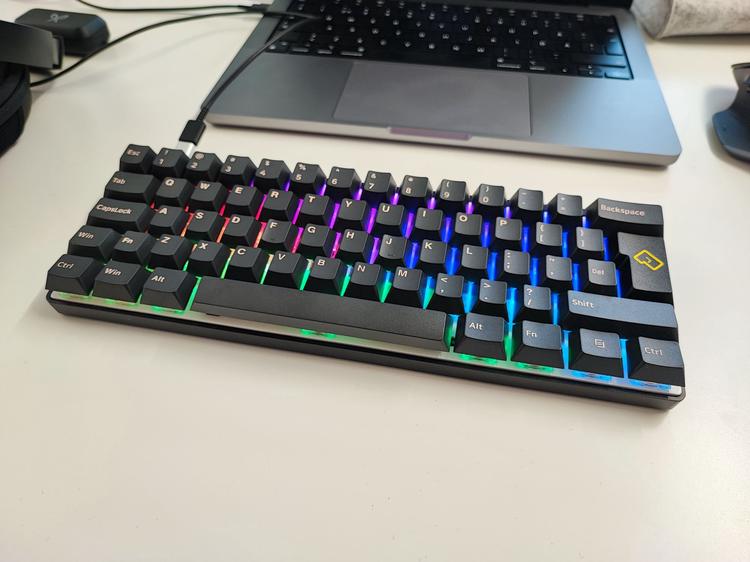
The PC66
This board was created as a tribute to the IBM PCjr but with a modern twist resembling a traditional 65% keyboard. The keyboard is advertised as a hotswap gasket-mounted keyboard with wireless support.
Compared to a 65% layout, the lower left control-key is shorter (1U) and located next to the left-alt-key. The left edge of the spacebar is located 1U more towards the right edge. Other than that, the layout is quite standard and if you are an Apple-user, you will feel right at home with the control-key (command on apple) position.

Build quality
At first glance, the build quality is good but after some inspection, I started noticing some issues with the case.
Case
Upon first trying out the keyboard I didn’t notice anything, but once I started taking photos I noticed two things.
The first one was that the plastic surface of the board wasn’t uniform and had some spots that looks like dents. There are hard to spot but if you look at the board with light reflection, you can notice them. One spot also seemed slightly smoother than what the case normally feels like, hence shining a tad more.
The other flaw was that the case was warped. The warp turns the keyboard into a slight banana, dropping down slightly in the middle. The rubber feet on the bottom ate only on the sides, hence allowing the curving to happen. You can easily twist the case to be straight but it doesn’t stay straight.
Keycaps
The keycaps are thick dye-sub PBT and the print looks clean and sharp. I would have wished for dual-shot plastic but I bet that it would increase the price of the product too much. These are very nice keycaps for what they are.
Peripherals
The package comes with a decent coiled cable, hex key, metallic Vortex badge for the front of the keyboard, keycap puller, switch puller, and some additional Vortex-themed keycaps.
Disassembly
The case is held together with 8 hex screws. Upon removing these we can carefully remove the bottom and see how the keyboard is assembled. Once the back is carefully removed, you are faced with a large rubber mat and some cables dangling to the bottom piece. This board hosts a battery compartment and a daughterboard in the bottom part of the case. The daughterboard was a nice feature I hadn’t expected.
The PCB is fully surrounded in rubber which is used quite wildly, giving most of the weight to the keyboard. The PCB is a normal-looking 65% one but you can notice that Vortex is using the same PCB for their other products as this keyboard is e.g. missing the per-key RGB LEDs. It’s smart for a company to reuse PCBs or make them as variable as possible, as this reduces production costs.
The PC plate rests between soft gaskets making this a gasket mount, however, due to the excess amount of rubber used, the board doesn’t flex like a gasket-mounted board usually does but is rather stiff. All the rubber on the bottom stops any flex. Despite missing flex, the typing experience is good as the feel is very uniform and solid, making the switches stand out more.
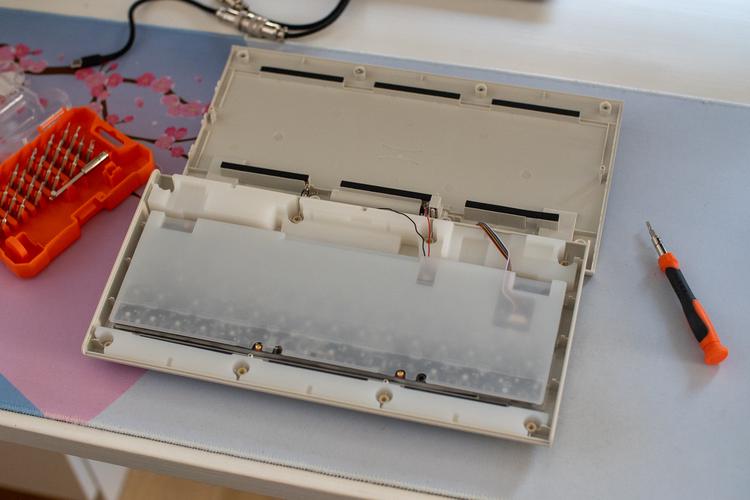
Switches & feel
The board I received came with Gateron G Pro Brown switches. I had never tried these before and I was interested in seeing if Gateron was able to make a high-quality switch. I need to say that I am impressed with the quality of the switches, but I still feel that they are subpar to e.g. Durock switches. The switches are also only 3-pin, which makes them slightly less stable than 5-pin switches. The switches felt smooth but had a too-shallow bump for my liking. Luckily the PCB is hotswap so these can be easily replaced.
The sound profile is something that fits very well into an office space as it’s quite muted with no high-pitch noises.
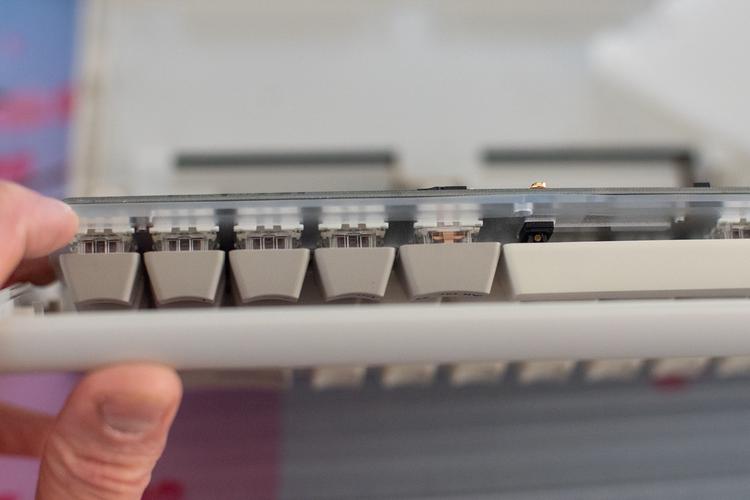
Stabilizers
I wanted to create a separate heading for stabilizers as they are often the largest issue in market keyboards. My old Pok3r had rattling stabilizers until I lubed them. PC66 has straight-from-the-box very solid stabilizers. The sound profile is uniform for the spacebar and the other keys (Enter & Backspace) have a satisfying thock. I would bet that these stabilizers have some rubber padding on the PCB and are lightly lubed. There is absolutely no rattle which was a really nice surprise!
I wish other manufacturers would take notes since market boards would be much better if their stabilizers were properly handled.
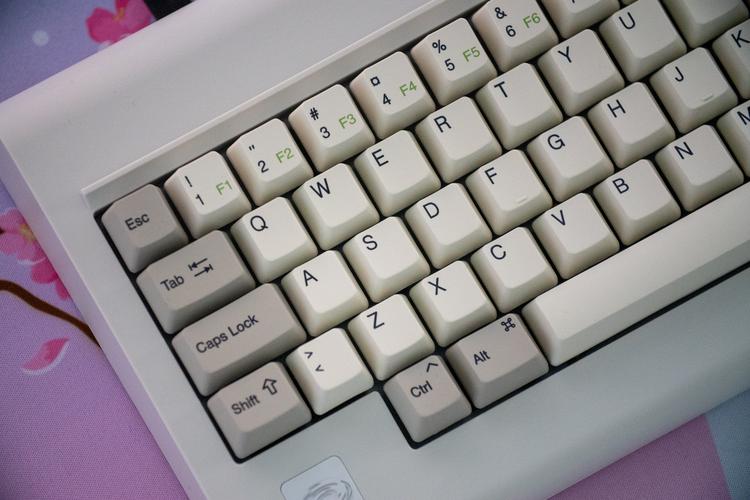
Firmware
The board doesn’t support QMK which is a big downside. I tried downloading the Windows GUI software for PC66 but that program didn’t do anything despite having the keyboard connected. Downloading the firmware for PC66 prompted again for a non-signed .exe file so I didn’t want to install it. You should be able to reconfigure the keyboard with the software but for some reason, my experience with the software has been lackluster.
I feel that Vortex should support QMK, and if they insist on making their software for changing the keyboard layouts, why not just make a fork of VIA but limit it to Vortex boards? The current solution only supports Windows, Mac, and Linux users who are left out of luck (even if the software worked).
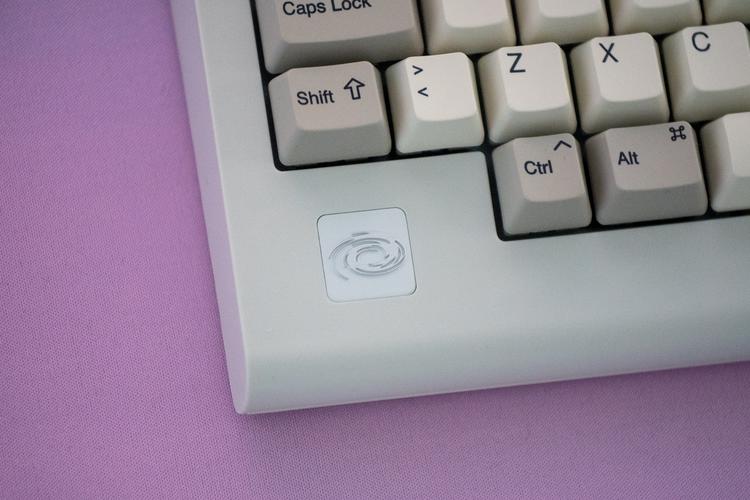
Usability
I thought about comparing different scenarios on how your experience would feel with this keyboard.
Typing/Working
Great, but only if you get used to the layout. This board is great for pure typists but if you do many combos (shortcuts), the missing keys might make things somewhat tricky. You might also get some street cred from senior workers who have experienced IBMs in their glory.
Gaming
I would say that this depends on the game you play. I would not play any FPS game with this board as my little finger wants to control the control key 🥁, but thankfully Vortex offers also a version of PC66 that comes with the left control key in case you need it. If you game something more casual, this keyboard might work for you.
Traversal
This keyboard can be used wirelessly with either Bluetooth or 2.4Ghz. I didn’t try these options as I want all my keyboards wired. Vortex has saved a buck with this keyboard by using AAA batteries instead of something rechargeable. The size of the keyboard doesn’t make it easy to travel with so it feels weird that it still supports wireless mode, maybe so that you can have a clutter-free desk.
My own take on PC66
I can right away say that this is not a keyboard for me. I’m just too much in love with a more ergonomic layout and going back to 60/65% just doesn’t do it for me. Here are my caveats in importance order:
- Not the layout for me
- Missing QMK
- Wrist-rests would be quite awkward with the front edge of the board
- Not the best switches for me (I’m very picky)
As you might notice, most of the caveats are something that many users can live happily without, hence you should not justify your opinion alone on my review but rather use it as a reference point when thinking about buying this keyboard.
The verdict
TL;DR solid keyboard that could be better in some aspects.
If you fancy the look of old keyboards, this can be a good choice for you. Finding old keyboards and getting them running with modern PCs is quite tedious and costly, PC66 is a much cheaper and solid alternative instead. There are some drawbacks with this board but as of its out-of-the-box quality, it’s quite good.
The good things worth mentioning
- Satisfying sound profile
- Good stabilizers
- Nice thick keycaps
The bad things worth mentioning
- Not the best layout (in my opinion)
- Lack of QMK support
If you would like to try this out I’ll be taking this with me to various keyboard meetups in Finland ✌️

See my other keyboard-related posts
Neito Rev. 2 Collaboration Opportunity
I'ts been too long since Rev. 1, but sometimes life happens and things take longer than anticipated. Now, however, progression has happened!
Vortex Model M SSK kit review (Sponsored)
Review of the new Vortex Model M SSK keyboard Kit. Despite this being a sponsored review I'm allowed to give my honest opinion on the keyboard.